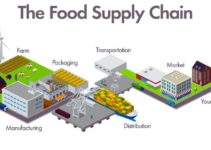International transportation and logistics management plays a significant role in the global economy. It is because many businesses and companies want to take advantage of the low-cost and specialized expertise in various regions and countries worldwide. However, it requires you to invest a significant amount of resources in procedures, technology, and finding the right partners. Today, we’ll discuss international transportation and logistics management; their definitions separately; key elements, various benefits, and challenges.
What is International Transportation Management?
International transportation management focuses on the flow of products and people from one country or region to the other part of the world. When products and goods transfer from one country’s border to another country via sea, land, or air; then it falls under the category of international transportation.
Global transport goes way beyond the national border and it serves across the globe. Transport agents and companies would help you to carry out the paperwork and processes, and it helps you to make sure of fast and safe shipment.
International transport is heavily reliant on the timing of when you are going to ship the particular goods. When it comes to transporting fruits or foods, then they require speedy delivery. You should keep in mind the distance and speed while selecting the mode of transportation.
What is International Logistics Management?
International logistics is the method of planning and executing how businesses and companies transport physical materials and goods from suppliers to the end consumers and it comprises of crossing the international border. However, it focuses on the international flow of information and money; deals with business logistics in two or more countries.
Some of the main strategies for dealing with international logistics are as follows;
- Efficiently shipping goods from suppliers to the customers
- Staying informed about the market demands
- Inventory management
- Optimizing supply chain processes
Elements of International Transportation and Logistics Management
Some of the main elements of international TLM are as follows;
Visible Transport
SC visibility and transparency allow you to perceive the movement of products and goods in the SC network and process. Excellent visibility means tracking the physical location of various orders and parcels in real-time across the supply chain network. However, it tells you the location of content and products in the warehouse.
Chain of Custody
Chain of custody lets you know about the location of products and goods at a particular time. You don’t need the daily information, but having it would help you to track the cause of the problem. You should know that individuals in businesses and companies in the SC network have got a higher rate of making errors than others.
Traceability and Tracking
Traceability lets you know where things are going in a particular direction; instead of knowing where things are. The source of global operations is in various countries worldwide; the product you see in your store may have come from another part of the world.
Consignment Integrity
The integrity of consignment means that the product would reach the required destination at the right time in good condition. You should make sure that the contracting company has rightly managed the product as discussed in the contract.
Benefits of International TLM
Some of the main benefits of international transportation and logistics management are as follows;
Specialization
People have achieved specialization in various fields across the world with economic growth and development. The focus of businesses and companies is to perform a few things with specialized expertise, rather than trying to do all. The specialization promotes an environment of creativity and competition, and the international TLM helps you to move goods from one part of the world to another.
Innovation & Productivity
Specialization and expertise allow you to attract talented professionals from across the world; it amplifies innovation and productivity from across the world. It wouldn’t have been possible without it. Language and communication barrier used to be the big issue, but it has become manageable with translation applications and equipment.
Competitive Edge
Talented professionals are dispersed in various regions across the world. They allow you to go abroad to buy and sell products, goods, and services; it helps you to gain a competitive edge in the form of cost efficiency and high-quality products and services.
Challenges of International TLM
Some of the main challenges to international transportation and logistics management are as follows;
Geography
The vast geographical distance is the main hurdle and it requires you to employ cars, vans, trains, airplanes, or ships. Geographical distance is something that you can’t avoid, and it may take a lot of time to reach the required destination.
Translation Difficulties
Language and translations are the other main barriers and there are some uncommon languages in particular parts of the world. If you are dealing with such suppliers or vendors, then it is going to be a huge problem because currency needs conversion for the completion of the transaction.
Regulations
Trade, tax, and customs regulations of different countries are different, and you should consider complying with the rules of the country. It requires you proper maintenance of all the necessary documents like correct submission of all the documents.
Conclusion: International Transportation and Logistics Management
After an in-depth study of international transportation and logistics management; we have realized that international logistics management is highly significant and offers you a lot of benefits. If you are learning about the international TLM, then you should keep in mind the abovementioned elements, benefits, and challenges.
Ahsan is an accomplished researcher and has a deep insight in worldly life affairs. He goes Live 3 days a week on various social media platforms. Other than research writing, he’s a very interesting person.


